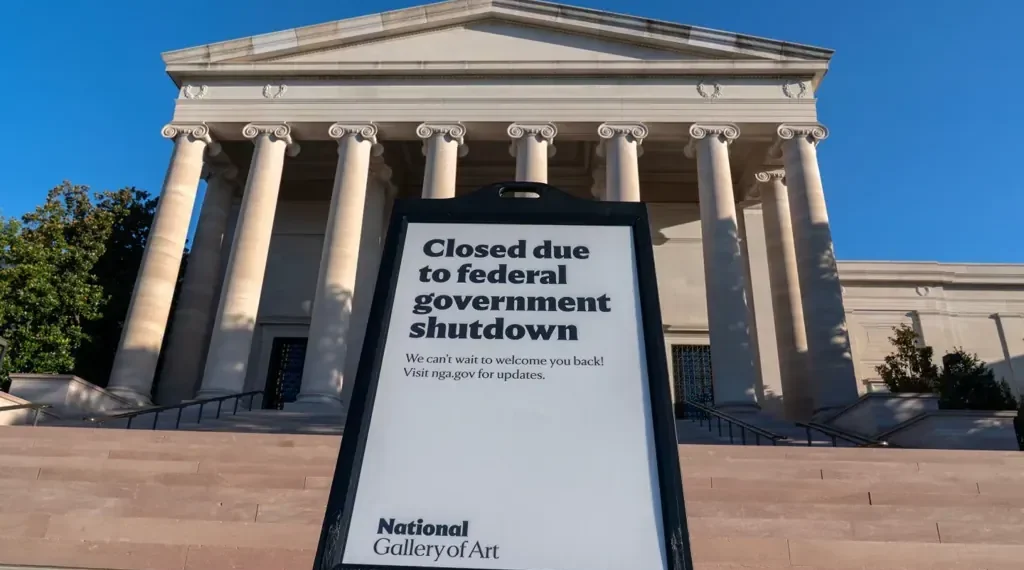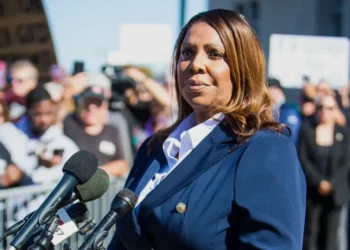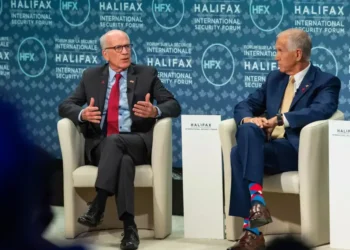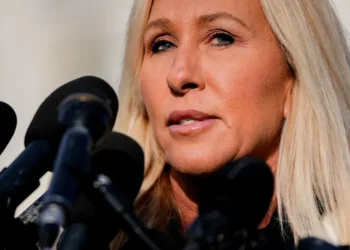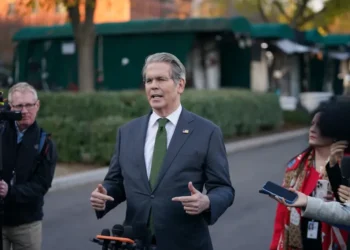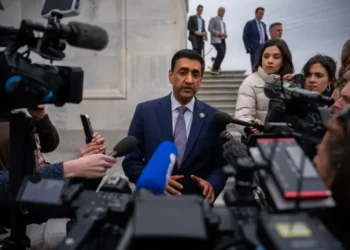The United States government shutdown is approaching the second longest in history, with no sign of resolution as political tensions between the White House and Congress deepen. Analysts warn that if the standoff continues, it could soon surpass the 35-day shutdown during former President Donald Trump’s first term — a record many hoped would never be repeated.
The shutdown, which began on October 1, has disrupted essential federal services, left hundreds of thousands of government employees without pay, and slowed economic growth across key sectors. Both parties remain entrenched in their positions, with the Trump administration using the impasse to pursue political objectives while Democrats push for expanded healthcare funding and social protections.
Federal Workers Face Growing Hardship
According to the Congressional Budget Office (CBO), the U.S. federal government employs roughly 2.3 million civilian workers. Of those, about 750,000 have been furloughed each day since the shutdown began. Furloughed workers are barred from reporting to work until a new budget agreement is reached, while “excepted” employees must continue working without immediate pay.
All affected employees are expected to receive back pay once the shutdown ends. However, many are already facing the financial consequences of missed paychecks, with rent, loan payments, and utility bills piling up.
The CBO estimates that taxpayers are paying approximately $400 million per day to cover the costs of furloughed workers’ salaries during the shutdown. Meanwhile, the Trump administration has begun initiating workforce reductions across several federal agencies, citing the opportunity to “shut down unnecessary bureaucracy.”
Budget chief Russ Vought said during an interview that more than 10,000 federal workers could ultimately lose their jobs, with major cuts planned at the Treasury, Health and Human Services, Education, and Housing and Urban Development departments. “We want to be very aggressive where we can be in shuttering the bureaucracy,” Vought said.
However, a federal judge temporarily blocked the administration’s mass layoff plan, calling it “politically motivated” and “procedurally reckless.” White House Press Secretary Karoline Leavitt said the administration was “100% confident” it would prevail in further legal proceedings.
Across Washington, food banks have expanded operations to assist affected workers. The Capital Area Food Bank announced additional food distribution programs beginning Monday to support both federal employees and contractors.
Economic Costs Mount Across the Country
Economists warn that even short shutdowns have measurable effects on national growth. Oxford Economics estimates that each week of closure reduces GDP by roughly 0.1 to 0.2 percentage points. A full-quarter shutdown — which has never occurred — could slash growth by up to 2.4 percentage points.
The travel and tourism industries have been among the hardest hit. The U.S. Travel Association estimates losses of about $1 billion weekly as visitors cancel trips to national parks, museums, and the nation’s capital, where attractions such as the Smithsonian museums and the National Zoo remain closed.
The Small Business Administration (SBA), which typically supports $860 million in loans to 1,600 small businesses each week, has halted all new lending during the shutdown. This has delayed business expansions, equipment purchases, and hiring across the country.
Flood insurance renewals have also been suspended, causing bottlenecks in mortgage approvals and real estate transactions. Meanwhile, the Federal Aviation Administration reports growing shortages of air traffic controllers in major cities, contributing to flight delays in Boston, Philadelphia, Atlanta, Houston, Nashville, Dallas, and Newark.
Political Stalemate Shows No Signs of Breaking
The political consequences of the shutdown remain uncertain, though both parties are already maneuvering to shape public perception. Polls from the Associated Press-NORC Center for Public Affairs Research show a divided electorate: 60% of U.S. adults blame Trump and congressional Republicans for the shutdown, while 54% say Democrats share significant responsibility.
Historically, the party that demands conditions for reopening the government rarely emerges politically stronger. That pattern held true during the 2013 and 2018 shutdowns, both of which backfired on Republican negotiators.
This time, the Trump administration has tied the shutdown to its effort to reshape federal spending priorities. Roughly $18 billion in infrastructure funding — including projects such as a new Hudson River tunnel between New York and New Jersey and an extension of New York City’s Second Avenue subway — has been suspended. Additionally, the administration canceled $7.6 billion in clean energy grants that largely benefited states carried by Democratic candidate Kamala Harris in the previous election.
The White House has insisted these cuts are unrelated to the shutdown, though critics argue they reveal a pattern of politically selective funding.
No Clear Path to Resolution
As the shutdown enters its fourth week, neither side appears ready to compromise. Senate Majority Leader John Thune reiterated that Republicans would only discuss healthcare funding after the government fully reopens. “We’re not conducting negotiations in a hostage situation,” he said.
Across the Capitol, House Democratic Leader Hakeem Jeffries maintained that his caucus would continue to resist what he called “politically motivated budget tactics.” “We’re not going to bend and we’re not going to break,” Jeffries said. “We are standing up for the American people.”
Analysts warn that even if a short-term funding measure emerges, the structural rift between the White House and Congress could persist for months. The impasse has also raised concerns among investors and credit rating agencies, which are monitoring potential disruptions to U.S. debt payments and financial stability.
As the crisis drags on, public frustration is growing. For millions of federal workers and contractors, the uncertainty is becoming unbearable. “We just want to work and be paid for it,” said one furloughed employee in Washington. “Politics shouldn’t decide whether our families can eat.”

This article was rewritten by JournosNews.com based on verified reporting from trusted sources. The content has been independently reviewed, fact-checked, and edited for accuracy, neutrality, tone, and global readability in accordance with Google News and AdSense standards.
All opinions, quotes, or statements from contributors, experts, or sourced organizations do not necessarily reflect the views of JournosNews.com. JournosNews.com maintains full editorial independence from any external funders, sponsors, or organizations.
Stay informed with JournosNews.com — your trusted source for verified global reporting and in-depth analysis. Follow us on Google News, BlueSky, and X for real-time updates.
